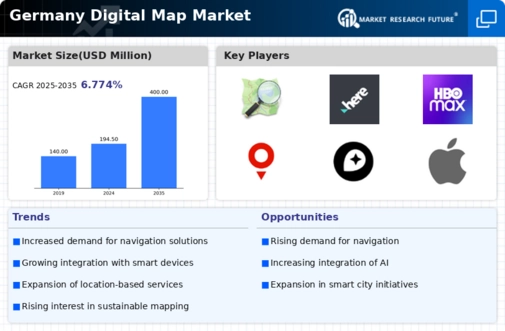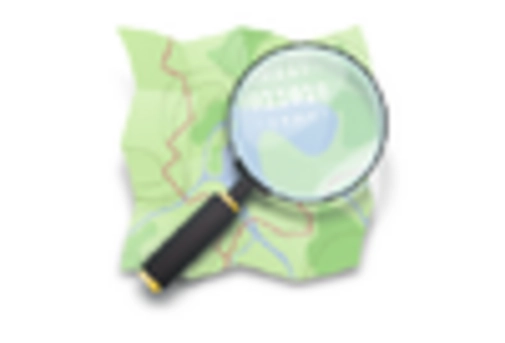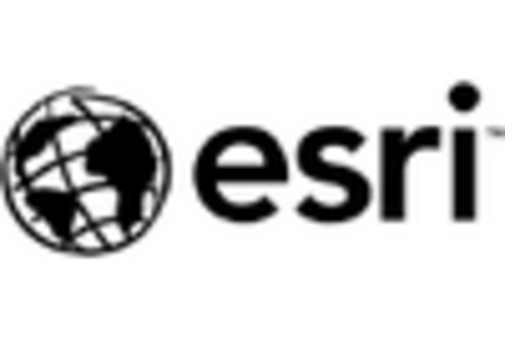Increased Focus on Data Privacy
The digital map market in Germany is also shaped by an increased focus on data privacy and security. As consumers become more aware of their digital footprints, there is a growing demand for mapping solutions that prioritize user privacy. Regulations such as the General Data Protection Regulation (GDPR) have heightened the need for companies to ensure compliance while providing mapping services. This shift is likely to influence the development of privacy-centric mapping technologies, which could reshape the digital map market landscape. Companies that successfully navigate these regulatory challenges may find new opportunities for growth, appealing to privacy-conscious consumers.
Expansion of Smart City Initiatives
The digital map market in Germany is poised for growth due to the expansion of smart city initiatives. As urban areas increasingly adopt smart technologies, the need for comprehensive mapping solutions becomes paramount. These initiatives often involve the integration of various data sources, including traffic patterns, public transport systems, and environmental data, into digital maps. By 2025, investments in smart city projects are projected to exceed €10 billion, creating a substantial opportunity for the digital map market. This trend suggests that as cities evolve into smart ecosystems, the demand for advanced mapping solutions will likely increase, driving innovation and market growth.
Technological Advancements in Mapping
The digital map market in Germany is experiencing a surge due to rapid technological advancements. Innovations in GPS technology, satellite imagery, and data analytics are enhancing the accuracy and functionality of digital maps. For instance, the integration of high-resolution satellite imagery allows for detailed urban planning and navigation solutions. As of 2025, the market is projected to grow at a CAGR of approximately 10%, driven by these technological improvements. Furthermore, the increasing adoption of mobile devices and IoT applications is propelling the demand for real-time mapping solutions. This trend indicates a robust future for the digital map market, as businesses and consumers alike seek more precise and interactive mapping experiences.
Rising Popularity of Augmented Reality
The digital map market in Germany is witnessing a rising popularity of augmented reality (AR) applications. AR technology enhances the user experience by overlaying digital information onto the physical world, making navigation and location-based services more interactive. As of 2025, the AR market is expected to grow by 25%, indicating a strong potential for integration with digital mapping solutions. This trend suggests that businesses in the digital map market may increasingly develop AR features to attract users seeking innovative navigation experiences. The convergence of AR and digital mapping could redefine how individuals interact with their environments, further propelling market growth.
Growing Demand for Navigation Solutions
The digital map market in Germany is significantly influenced by the growing demand for navigation solutions. With the rise of e-commerce and delivery services, accurate navigation has become essential for logistics and transportation sectors. In 2025, the market for navigation applications is expected to reach €1.5 billion, reflecting a strong inclination towards efficient route planning and traffic management. Additionally, the increasing reliance on digital maps for personal navigation, especially among urban populations, further fuels this demand. As consumers seek seamless travel experiences, the digital map market is likely to expand, catering to both individual users and businesses requiring sophisticated navigation tools.




















Leave a Comment